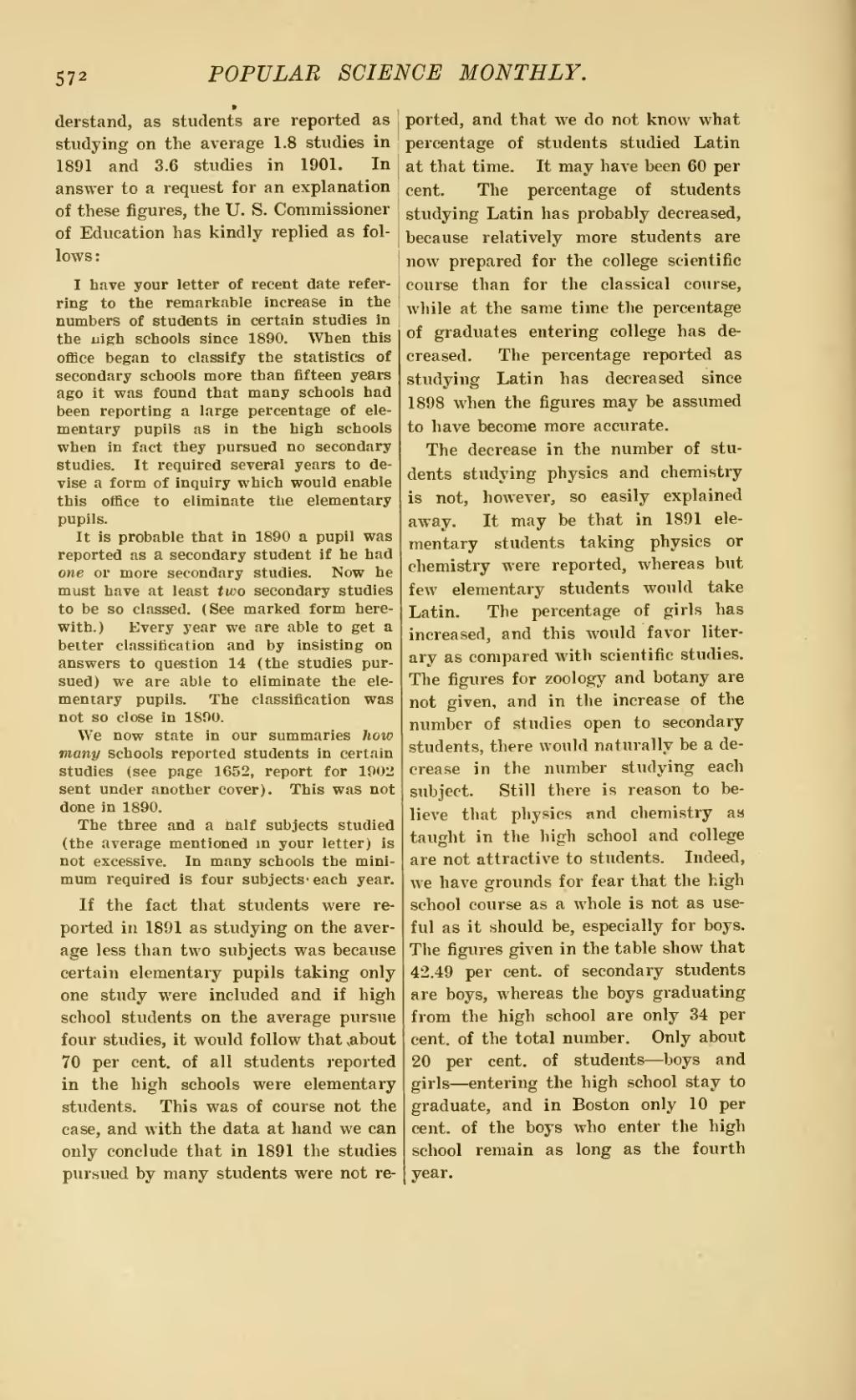derstand, as students are reported as studying on the average 1.8 studies in 1891 and 3.6 studies in 1901. In answer to a request for an explanation of these figures, the U. S. Commissioner of Education has kindly replied as follows:
I have your letter of recent date referring to the remarkable increase in the numbers of students in certain studies in the high schools since 1890. When this office began to classify the statistics of secondary schools more than fifteen years ago it was found that many schools had been reporting a large percentage of elementary pupils as in the high schools when in fact they pursued no secondary studies. It required several years to devise a form of inquiry which would enable this office to eliminate the elementary pupils.
We now state in our summaries how many schools reported students in certain studies (see page 1652, report for 1902 sent under another cover). This was not done in 1890.
The three and a half subjects studied (the average mentioned in your letter) is not excessive. In many schools the minimum required is four subjects' each year.If the fact that students were reported in 1891 as studying on the average less than two subjects was because certain elementary pupils taking only one study were included and if high school students on the average pursue four studies, it would follow that about 70 per cent, of all students reported in the high schools were elementary students. This was of course not the case, and with the data at hand we can only conclude that in 1891 the studies pursued by many students were not reported, and that we do not know what percentage of students studied Latin at that time. It may have been 60 per cent. The percentage of students studying Latin has probably decreased, because relatively more students are now prepared for the college scientific course than for the classical course, while at the same time the percentage of graduates entering college has decreased. The percentage reported as studying Latin has decreased since 1898 when the figures may be assumed to have become more accurate.
The decrease in the number of students studying physics and chemistry is not, however, so easily explained away. It may be that in 1891 elementary students taking physics or chemistry were reported, whereas but few elementary students would take Latin. The percentage of girls has increased, and this would favor literary as compared with scientific studies. The figures for zoology and botany are not given, and in the increase of the number of studies open to secondary students, there would naturally be a decrease in the number studying each subject. Still there is reason to believe that physics and chemistry as taught in the high school and college are not attractive to students. Indeed, we have grounds for fear that the high school course as a whole is not as useful as it should be, especially for boys. The figures given in the table show that 42.49 per cent, of secondary students are boys, whereas the boys graduating from the high school are only 34 per cent, of the total number. Only about 20 per cent, of students—boys and girls—entering the high school stay to graduate, and in Boston only 10 per cent, of the boys who enter the high school remain as long as the fourth year.

